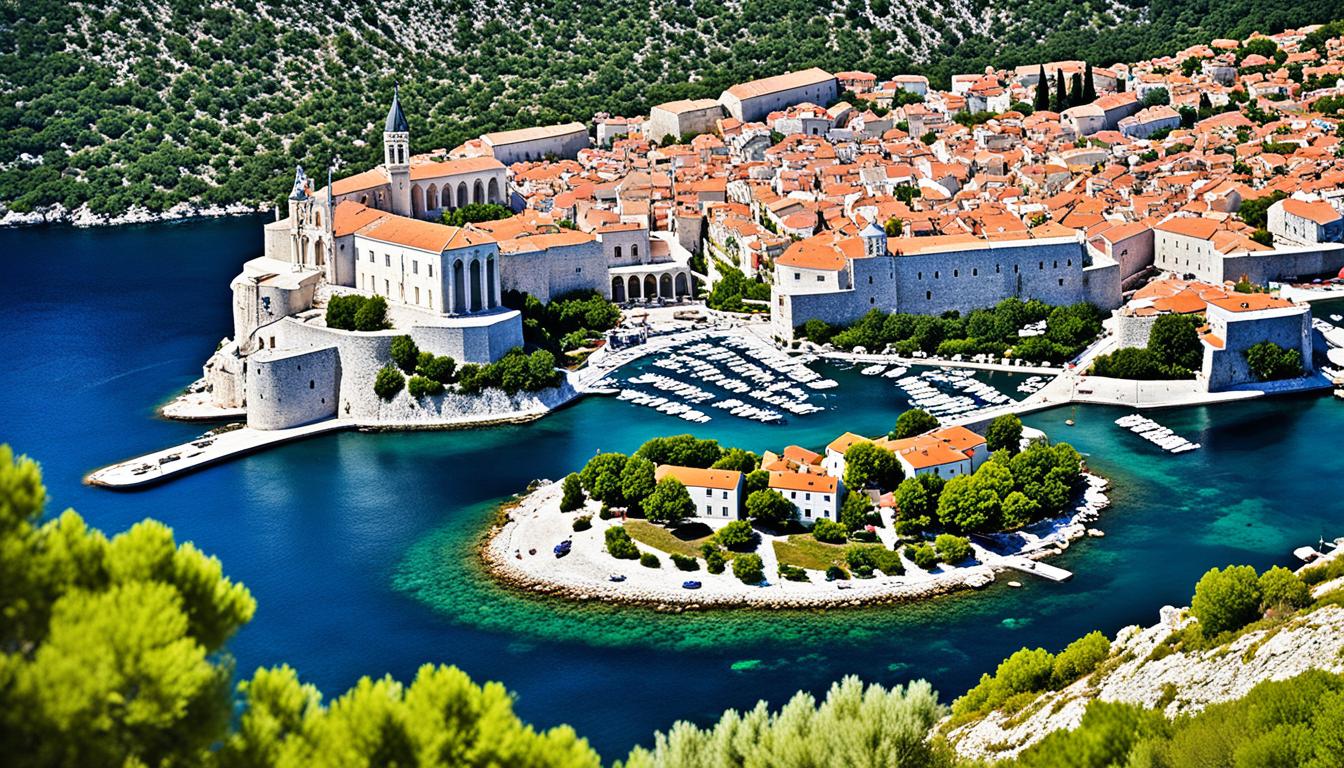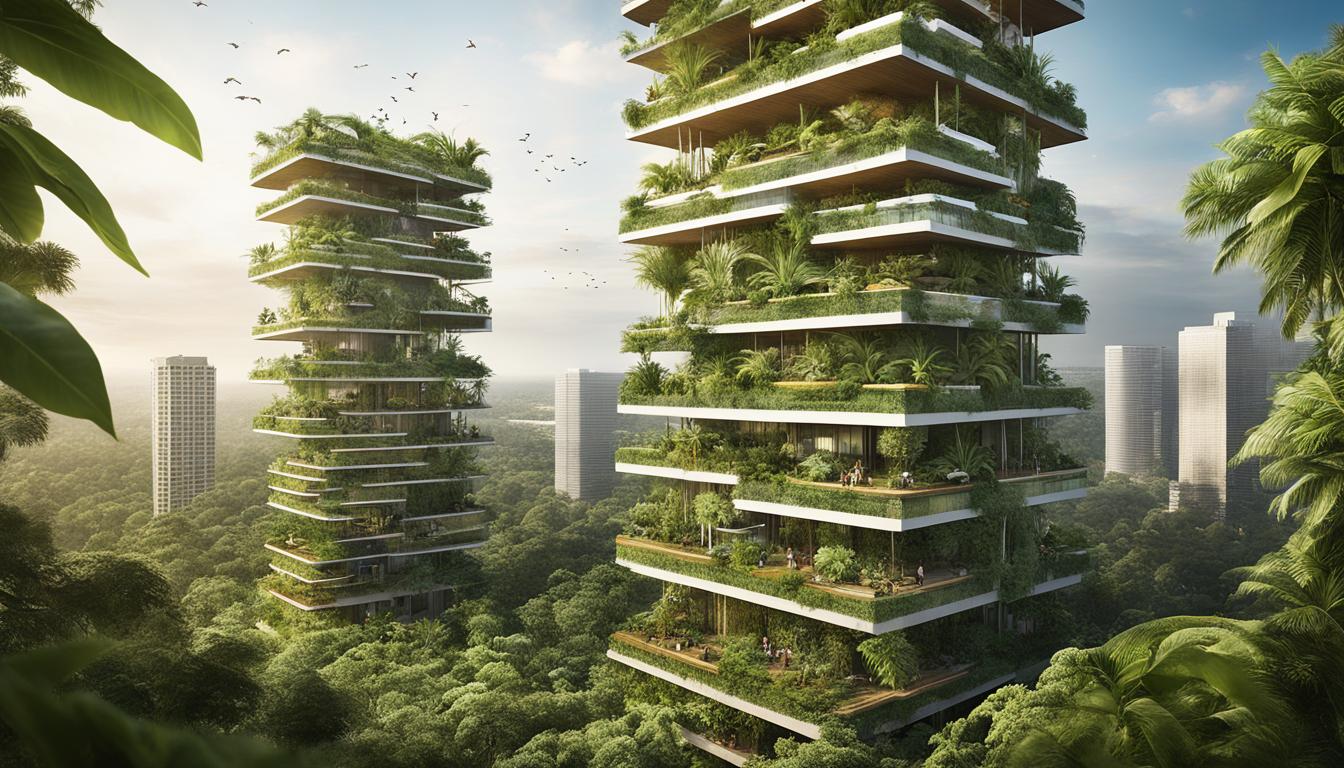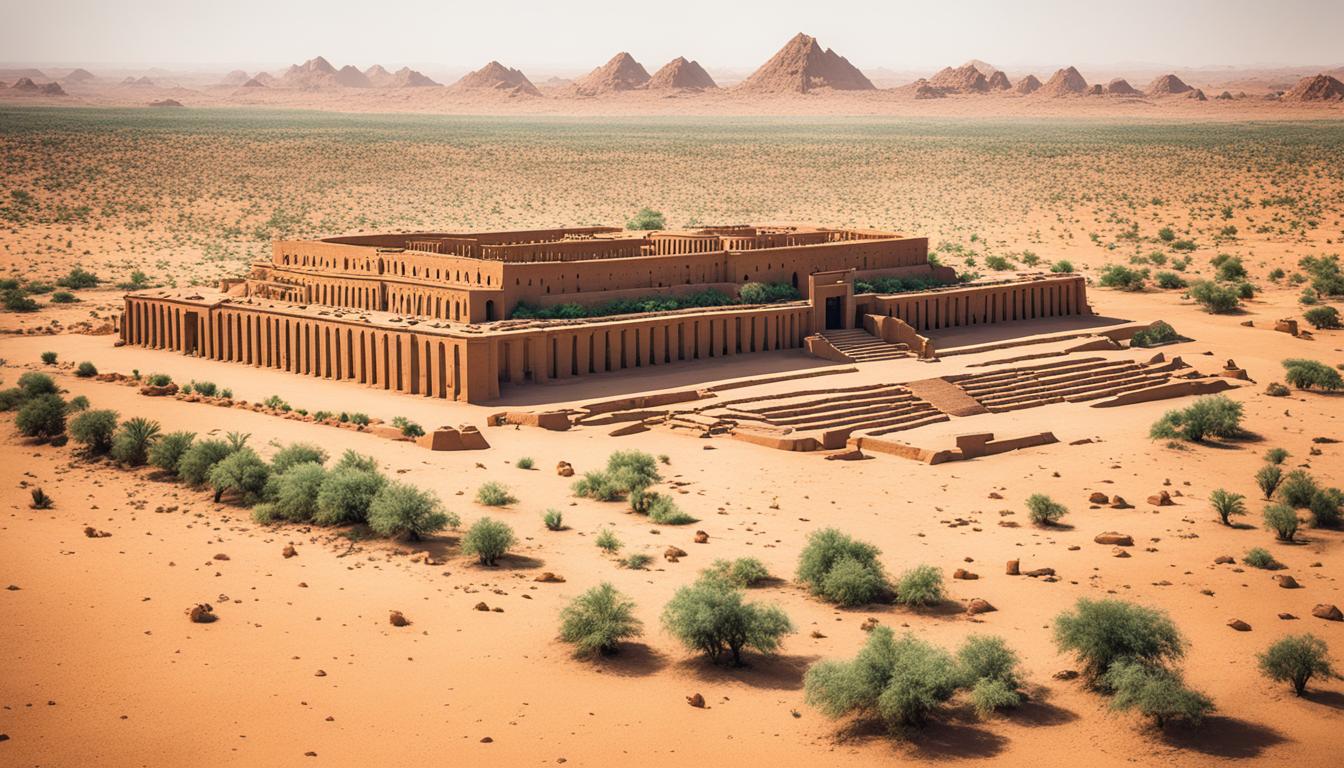Cuba Biodiversity and the Built Environment
When it comes to exceptional biodiversity, Cuba is a country that stands out. With over 6,000 species of plants and numerous endemic species, it is considered the most naturally diverse Caribbean nation. Cuba’s unique historical development, low population density, and relative land isolation have contributed to the preservation of its natural habitats. Additionally, the country has made significant efforts to promote eco-friendly architecture and sustainable design in its built environment.
Key Takeaways
- Cuba is known for its exceptional biodiversity, with over 6,000 species of plants and numerous endemic species.
- The country’s unique historical development and low population density have contributed to the preservation of its natural habitats.
- Cuba has made efforts to promote eco-friendly architecture and sustainable design in its built environment.
- The preservation of Cuba’s biodiversity and the promotion of sustainable practices are key priorities for the country.
- Collaboration between scientific researchers and ecotourism play a crucial role in preserving Cuba’s biodiversity.
The Rich Biodiversity of Cuba
Cuba is often referred to as the “biological superpower of the Caribbean.” With its diverse ecosystem and abundant flora and fauna, it boasts a remarkable level of biodiversity that attracts scientists, nature enthusiasts, and ecotourists from around the world.
One of the notable aspects of Cuba’s biodiversity is its palm tree species. The island is home to more than 100 species of palm trees, including the iconic royal palm (Roystonea regia). These majestic trees, with their tall trunks and elegant fronds, add to the picturesque landscapes of Cuba.
Additionally, Cuba is known for its endemic species, which are unique to the island and found nowhere else in the world. One such species is the solenodon (Solenodon cubanus), a primitive mammal that resembles a shrew and is only found in Cuba and neighboring Hispaniola. Another remarkable endemic species is the bee hummingbird (Mellisuga helenae), the smallest bird in the world. These endemic species contribute to the rich biodiversity of Cuba and highlight the importance of preserving its unique ecosystems.
“Cuba’s biodiversity is a treasure trove for biologists and ecotourists alike. The abundance of palm tree species and endemic species makes it a paradise for nature enthusiasts.” – Dr. Maria Gonzalez, Ecologist
The conservation efforts in Cuba have played a crucial role in preserving its biodiversity. Strict environmental regulations, protected areas, and conservation programs ensure the survival of endangered species and the maintenance of fragile ecosystems.
Cuba’s rich biodiversity, encompassing palm tree species and endemic species, continues to inspire scientific research, promote ecotourism, and raise awareness of the importance of environmental conservation.
Protecting Cuba’s Natural Habitats
Cuba is committed to safeguarding its natural habitats and preserving its rich biodiversity. With approximately 22% of its land under protection, the country has established a network of national parks, biosphere reserves, and protected areas to ensure the conservation of its unique ecosystems.
The Cuban government has implemented stringent environmental impact assessments to evaluate the potential effects of development projects on the island’s ecosystems. This ensures that any initiatives undertaken do not compromise the delicate balance of nature. By conducting these assessments, Cuba aims to minimize the negative environmental consequences of human activities and promote sustainable development.
“Our commitment to environmental conservation goes hand in hand with our efforts to achieve economic and social progress. We believe that responsible development can coexist harmoniously with the protection of our natural heritage.” – Cuban Minister of the Environment
Through these dedicated conservation efforts, Cuba has successfully preserved its biodiversity and protected its valuable natural resources. By designating areas as protected lands, the country safeguards crucial habitats for a diverse range of plant and animal species, many of which are endemic to Cuba. These protected areas serve as sanctuaries for these unique species and contribute to the overall biodiversity of the region.
The Impact of Protected Lands
Protected lands play a vital role in maintaining ecosystem balance and promoting environmental stability. They provide habitats for numerous species, including endangered and threatened ones, ensuring their survival for future generations. Additionally, these protected areas offer recreational and educational opportunities, allowing visitors to appreciate and learn about Cuba’s magnificent natural wonders.
The presence of protected lands also attracts ecotourism, a sector that contributes significantly to Cuba’s economy. Visitors from around the world come to explore the country’s diverse landscapes, contributing to local communities and promoting sustainable travel practices. The revenue generated from ecotourism further supports conservation efforts and underscores the value of protecting Cuba’s natural habitats.
To illustrate the scope and significance of Cuba’s protected lands, the table below highlights a selection of the country’s notable conservation areas:
| Protected Area | Location | Main Features |
|---|---|---|
| Alejandro de Humboldt National Park | Eastern Cuba | Unesco World Heritage Site, rich biodiversity, endemic species |
| Viñales Valley | Western Cuba | Unique karst landscape, traditional agriculture, cultural value |
| Jardines de la Reina | South-central Cuba | Marine protected area, coral reefs, diverse marine life |
| Ciénaga de Zapata | Southwestern Cuba | Wetland ecosystem, birdwatching, crocodile habitat |
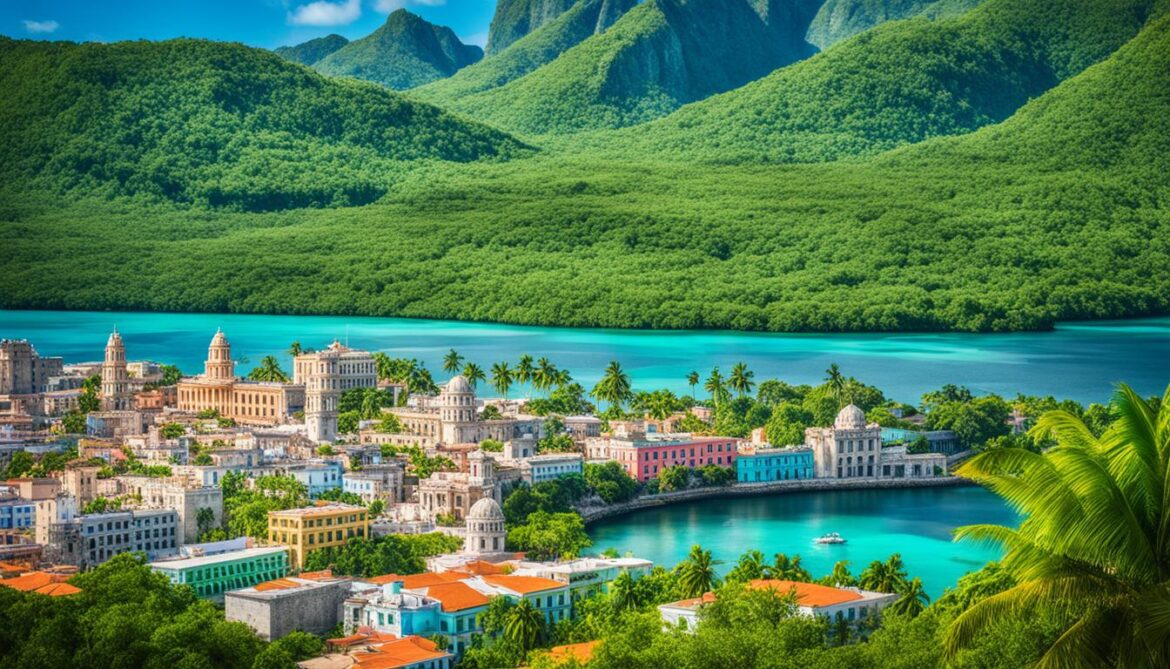
These protected areas are just a glimpse of the extensive network of conservation sites in Cuba. They showcase the country’s commitment to preservation and offer a glimpse into the diverse ecosystems that make Cuba a biodiversity hotspot.
By focusing on environmental impact assessments, designating protected lands, and promoting conservation efforts, Cuba strives towards a sustainable future. These initiatives aim to ensure that the natural beauty and ecological value of the island are preserved for generations to come, while also fostering a balance between environmental protection and socio-economic progress.
The Impact of the Built Environment
The built environment in Cuba plays a crucial role in shaping the country’s biodiversity. Sustainable design and green building practices are encouraged to minimize the negative impact on the environment. Urban ecology is also taken into consideration when planning and constructing buildings. The aim is to create harmonious and environmentally-friendly urban spaces that coexist with the natural habitats and promote environmental conservation.
By implementing green building practices, Cuba is prioritizing the use of renewable energy sources, energy-efficient materials, and sustainable construction techniques. These practices help reduce greenhouse gas emissions, minimize resource consumption, and enhance the overall environmental performance of buildings. Additionally, the incorporation of green spaces and rooftop gardens in urban design promotes urban ecology and provides important habitats for wildlife in urban areas.
“Sustainable design and green building practices are essential in creating a built environment that respects and protects the natural world. By considering the ecological impact of our urban spaces, we can create a healthier and more sustainable future for both humans and wildlife.” – Architectural Digest
To further highlight the impact of the built environment on biodiversity, here is a table showcasing the key features and benefits of green building practices:
| Key Features | Benefits |
|---|---|
| Use of renewable energy sources | Reduces reliance on fossil fuels and lowers greenhouse gas emissions |
| Energy-efficient materials | Reduces energy consumption and promotes resource conservation |
| Sustainable construction techniques | Minimizes construction waste and promotes a circular economy |
| Incorporation of green spaces | Enhances urban biodiversity and improves air quality |
| Rooftop gardens | Provides habitats for wildlife and reduces the urban heat island effect |
This table illustrates how green building practices contribute to both environmental and social benefits. By prioritizing sustainable design, Cuba is shaping a built environment that not only preserves the natural habitats but also promotes a more resilient and livable future.

Architectural Conservation in Cuba
Cuba places great importance on architectural conservation to safeguard its rich history and cultural heritage. The nation boasts numerous historical buildings and sites that showcase its colonial past and unique architectural styles. Through extensive restoration and maintenance efforts, these structures are preserved for future generations, ensuring their longevity and cultural significance. Architectural conservation in Cuba serves as a cornerstone for promoting sustainable tourism and preserving the country’s built environment.
Preserving historical buildings and heritage sites is not only an essential part of maintaining Cuba’s cultural identity but also contributes to sustainable development. These structures are not mere relics of the past but serve as valuable assets that attract tourists from around the world. By protecting and showcasing these architectural gems, Cuba can leverage its historical preservation efforts to support sustainable tourism initiatives.
Architectural conservation not only focuses on the physical restoration of buildings but also emphasizes the preservation of intangible heritage. This includes safeguarding traditional craftsmanship, architectural techniques, and cultural practices associated with these structures. By nurturing this holistic approach to architectural conservation, Cuba ensures the protection of its diverse cultural heritage and strengthens its national identity.
Moreover, architectural conservation in Cuba aligns with the principles of environmental sustainability. By revitalizing existing buildings rather than constructing new ones, the country reduces the environmental impact of construction materials and energy consumption. This approach promotes resource efficiency and mitigates the carbon footprint associated with new constructions.
Cuba’s commitment to architectural conservation extends beyond individual buildings and sites. The country has implemented comprehensive policies and regulations to guide conservation efforts. These frameworks align with international standards and best practices, ensuring that conservation projects are carried out with the utmost care and expertise.
“Architectural conservation plays a vital role in preserving Cuba’s built environment, cultural heritage, and promoting sustainable development.” – Eduardo Torres-Cuevas, Director of the Office of the Historian of Havana.
The architectural conservation efforts in Cuba serve as a source of inspiration for other nations with significant historical and cultural assets. By showcasing successful restoration projects and the benefits of preserving heritage sites, Cuba contributes to a global movement of sustainable cultural tourism and conservation.
Overall, architectural conservation in Cuba is not just about preserving beautiful buildings; it is about cherishing the country’s history, safeguarding its cultural heritage, and promoting a sustainable future. Through these efforts, Cuba establishes itself as a beacon of architectural excellence and environmental stewardship.
Ecotourism in Cuba
Cuba’s biodiversity and built environment provide a perfect backdrop for eco-friendly tourism and sustainable travel. The country’s natural attractions, including its stunning national parks, vibrant coral reefs, and lush rainforests, attract nature enthusiasts from all over the world. Visitors can explore diverse ecosystems, observe unique wildlife, and immerse themselves in the beauty of Cuba’s natural wonders.
Eco-friendly tourism practices are promoted to ensure that travelers have a minimal impact on the environment. Sustainable travel options, such as eco-lodges and eco-tours, are available to visitors, providing them with an opportunity to experience Cuba’s natural attractions while supporting local communities and preserving the natural habitats.
“The beauty of Cuba’s natural attractions is awe-inspiring. From the pristine beaches and crystal-clear waters to the lush forests and vibrant coral reefs, every experience is a testament to the importance of preserving our environment.”
Ecotourism in Cuba plays a crucial role in the conservation of biodiversity and the protection of natural habitats. By promoting sustainable practices and responsible tourism, the country strives to ensure that future generations can also enjoy the wonders of its ecosystems.
Benefits of Ecotourism in Cuba
Ecotourism in Cuba offers numerous benefits, both for travelers and the environment. Here are some of the key advantages:
- Preservation of natural habitats and biodiversity
- Sustainable economic development for local communities
- Education and awareness about environmental conservation
- Support for research and scientific studies
- Protection of cultural heritage and traditions
A Sustainable Travel Guide to Cuba
If you’re planning a trip to Cuba and want to embrace sustainable travel practices, here are some tips:
- Choose eco-friendly accommodations that prioritize energy efficiency and waste reduction.
- Support local businesses and artisans by buying locally made products and souvenirs.
- Respect the natural environment by following designated trails, not littering, and avoiding activities that may harm wildlife or ecosystems.
- Learn about Cuba’s unique biodiversity and cultural heritage through local guides and educational experiences.
By adopting these sustainable travel practices, you can contribute to the preservation of Cuba’s natural attractions and support the local communities that depend on them.
Explore Cuba’s Natural Attractions
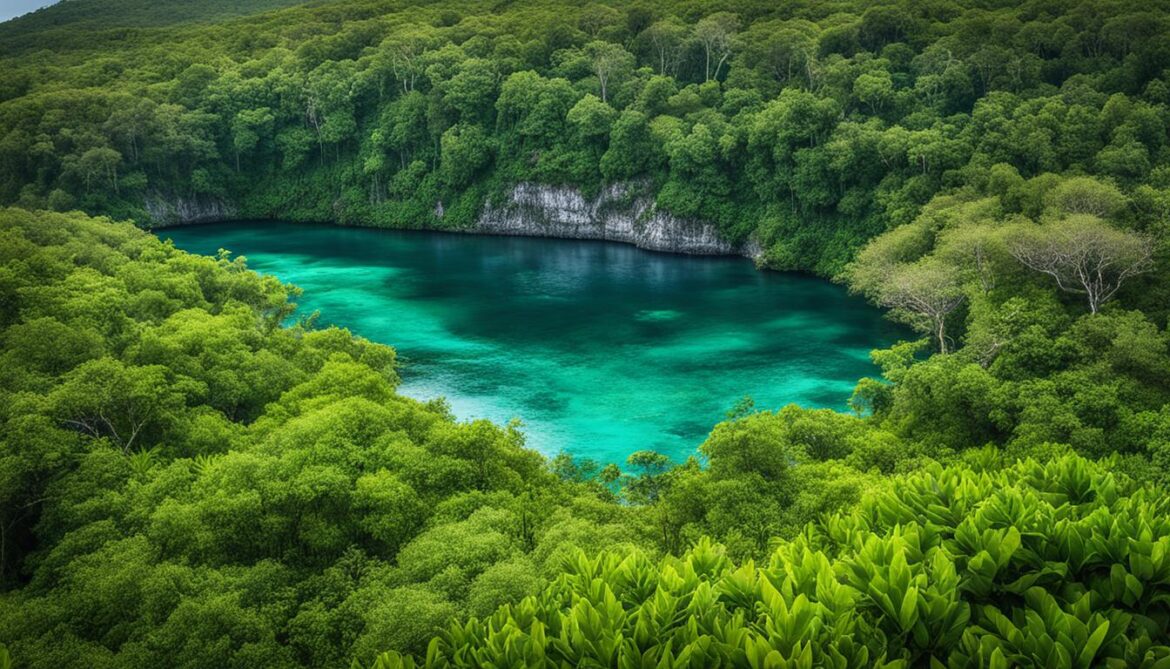
When visiting Cuba, make sure to explore its incredible natural attractions:
| Natural Attraction | Description |
|---|---|
| Viñales Valley | A UNESCO World Heritage site known for its breathtaking landscapes and tobacco fields. |
| Ciénaga de Zapata | The largest wetland reserve in the Caribbean, famous for its diverse bird species and pristine ecosystems. |
| Topes de Collantes | A nature reserve in the Escambray Mountains, offering stunning waterfalls, hiking trails, and panoramic views. |
| Jardines del Rey | A collection of idyllic islands and coral reefs, perfect for snorkeling, diving, and beach lovers. |
Whether you’re exploring the dramatic landscapes of the Viñales Valley, birdwatching in the Ciénaga de Zapata, hiking in Topes de Collantes, or enjoying the pristine beaches of Jardines del Rey, Cuba’s natural attractions will leave you in awe of its beauty.
Scientific Collaboration in Cuba
Despite political challenges, scientific collaboration between Cuba and other countries, including the United States, has been growing. The lifting of certain restrictions has enabled scientists to collaborate on research projects and share expertise. This collaboration is particularly important for biodiversity studies, as it allows for a deeper understanding of Cuba’s unique ecosystems and the development of conservation strategies.
The Importance of Scientific Collaboration
Scientific research plays a crucial role in biodiversity studies and conservation efforts. By collaborating with international scientists, Cuba can leverage diverse expertise and resources to enhance its research capabilities. This collaboration enables the exchange of knowledge, data, and methodologies, leading to more comprehensive studies and informed conservation strategies.
“Scientific collaboration allows for a holistic approach to biodiversity studies, bringing together scientists from different countries to tackle complex environmental challenges” – Dr. Maria Rodriguez, Cuban researcher.
Collaboration Between Cuba and the United States
The scientific collaboration between Cuba and the United States has seen significant progress in recent years. Both countries recognize the mutual benefits of sharing scientific knowledge and fostering cooperation in biodiversity studies. This collaboration has opened doors to joint research projects, academic exchanges, and scientific conferences, facilitating the exchange of ideas and expertise.
An Example of Collaborative Research
One notable example of scientific collaboration in biodiversity studies is the joint project between Cuban and American researchers on coral reef conservation. Cuba’s pristine coral reefs are of global importance and face various threats, including climate change and pollution. Through collaborative research, scientists can assess the health of coral reefs, develop conservation strategies, and promote sustainability in the marine ecosystem.
| Benefits of Scientific Collaboration in Biodiversity Studies | Examples |
|---|---|
| Access to diverse expertise and resources | Joint research projects on bird migration patterns |
| Informed conservation strategies | Collaborative studies on invasive species management |
| Enhanced research capabilities | International conferences on tropical forest ecology |
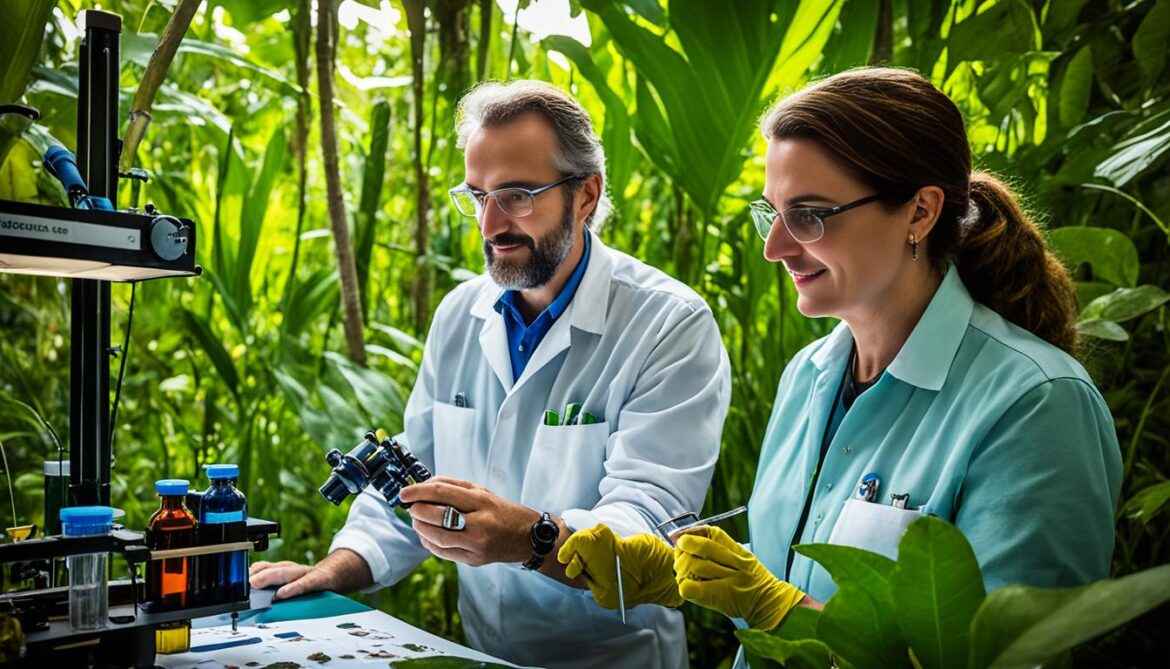
Scientific collaboration in biodiversity studies not only contributes to the advancement of knowledge but also promotes cultural exchange and strengthens diplomatic ties. By working together, scientists from Cuba and other countries can make significant contributions to global biodiversity conservation efforts.
Future Challenges and Opportunities
The future of Cuba’s biodiversity and built environment presents a unique set of challenges and exciting opportunities. As the country embraces economic development and experiences a surge in tourism, it is essential to find a delicate balance between progress and environmental protection. By prioritizing sustainable practices and conservation efforts, Cuba can pave the way for a greener and more sustainable future.
Cuba has the potential to become a global model for sustainable development, showcasing how economic growth and environmental stewardship can coexist harmoniously. By adopting eco-friendly initiatives and preserving its natural resources, Cuba can lead the way towards a more sustainable future for the Caribbean and beyond.
“The true measure of a nation’s success lies in its ability to achieve economic development while protecting its unique ecosystems and natural heritage.” – Environmentalist Jane Wilson
Challenges:
- The need to achieve economic progress without compromising the country’s rich biodiversity and natural habitats
- The management of increased tourism’s impact on the environment and local communities
- The preservation of cultural heritage and historical architecture amidst urban development
Opportunities:
- Showcasing Cuba as a sustainable development model for other nations, with a focus on balancing economic growth and environmental protection
- Promoting research and collaboration to expand knowledge on Cuba’s unique ecosystems and develop effective conservation strategies
- Attracting eco-conscious travelers through sustainable tourism practices and eco-friendly accommodations
Striking a balance between economic development and environmental protection is crucial for building a sustainable future. Cuba’s commitment to sustainable practices, conservation efforts, and collaboration with international partners will be instrumental in achieving this vision. By embracing a holistic approach to development, Cuba can lead the way towards a greener, more sustainable future – one that ensures the preservation of its exceptional biodiversity and built environment for generations to come.
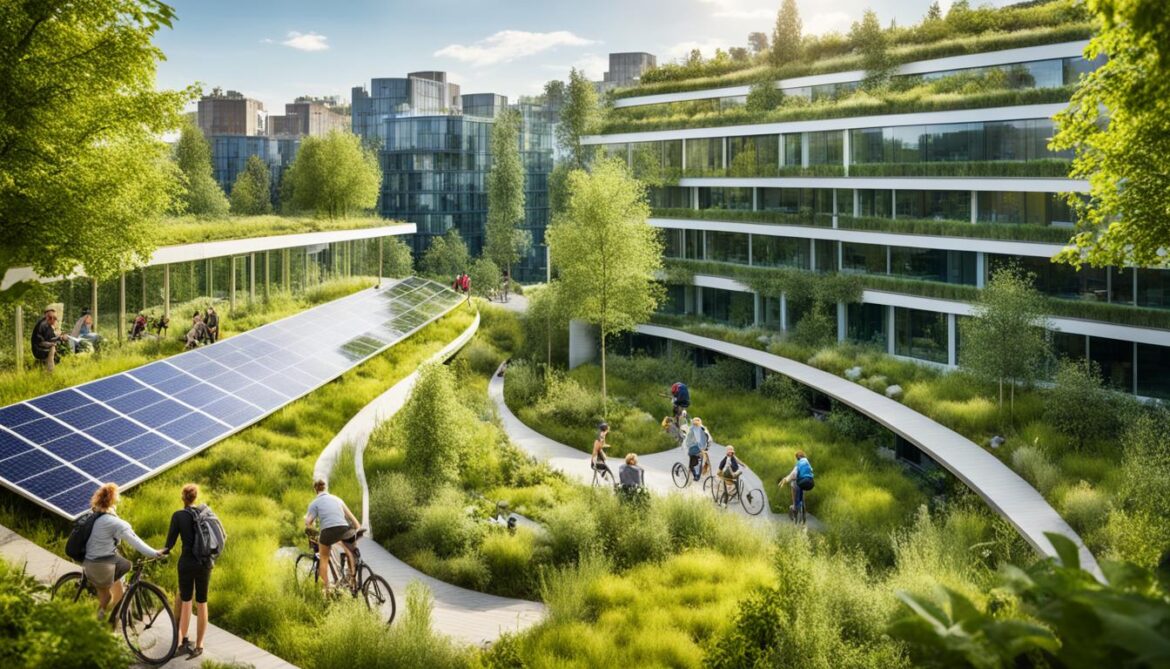
Conclusion
Cuba’s exceptional biodiversity and the preservation of its natural habitats have greatly influenced the development of the country’s built environment. With a strong emphasis on sustainable design, architectural conservation, and eco-friendly practices, Cuba is striving to create a greener future. The collaboration between scientists and the promotion of ecotourism further contribute to the preservation of Cuba’s unique biodiversity.
Despite facing various challenges, Cuba has the potential to become a model for sustainable development, inspiring other nations to prioritize environmental conservation. By integrating sustainable design principles and architectural conservation practices, Cuba is at the forefront of creating a harmonious balance between economic growth and preserving its natural heritage.
The country’s efforts in protecting its biodiversity through the implementation of strict environmental impact assessments and the establishment of protected lands demonstrate its commitment to sustainable development. Cuba serves as a symbol of how a nation can embrace sustainability by ensuring that its built environment promotes environmental conservation and coexists harmoniously with the natural habitats.
As Cuba continues to open up to economic development and increased tourism, it will be crucial to maintain a focus on sustainable design and eco-friendly practices. By doing so, Cuba can pave the way for a more sustainable future, setting an example for other nations to follow in the journey towards preserving biodiversity and building environmentally conscious built environments.




